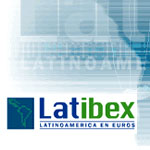The first five years of Latibex – the euro-denominated market for investing in Latin American companies that was created by the Madrid Stock Exchange – has confirmed its role as a faithful mirror of the region. Latibex has enormous growth potential, but many uncertainties and difficulties must be overcome if it is to really take off. Its greatest achievement has been its broad representation of Latin American stock exchanges. Its biggest drawback has been its shallow liquidity and lack of placements. Share prices are now recovering, after an initial crisis.

Sign up to stay informed about our latest article releases.